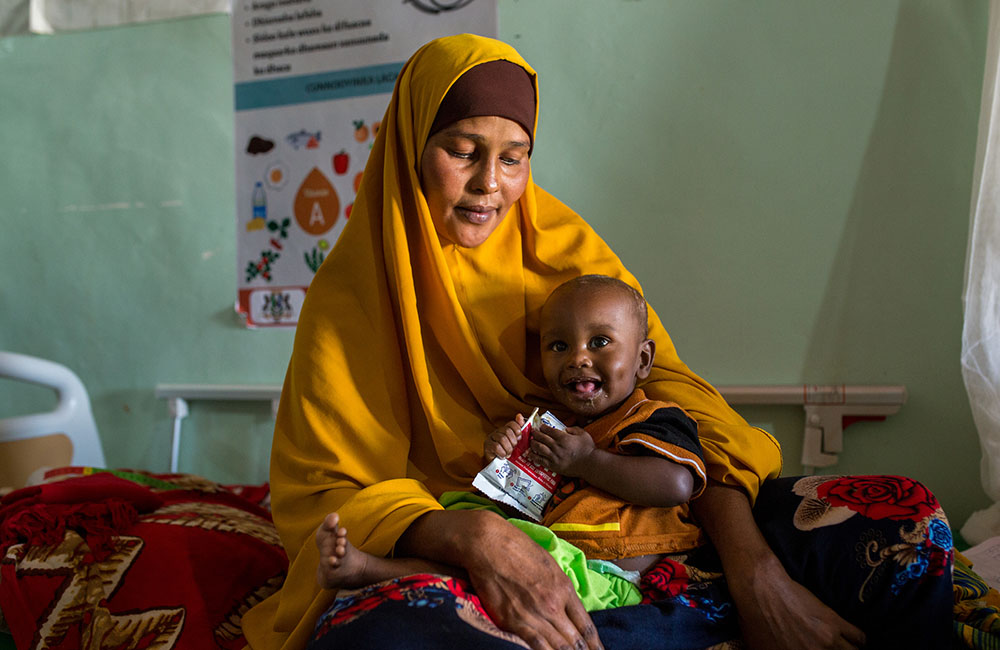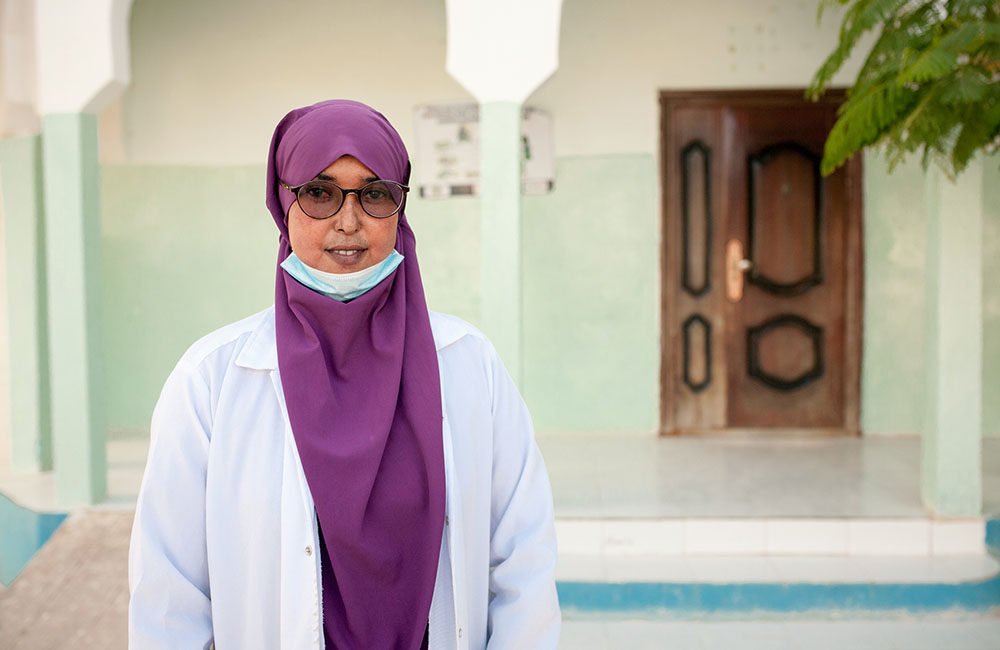Helping a child along the road from malnutrition to good health
Twenty-seven-year old Aasha* has seen what it takes to help a child recover from severe acute malnutrition – through the experience of her son Guled*. At just 10 months old, Guled had diarrhoea and was severely malnourished.
A pastoralist, Aasha’s income was gravely impacted by Somalia’s long running drought. Bereft, she couldn’t take her son to the hospital because she didn’t have enough money.
“I struggled to get here, financially it was hard to go to any hospital. Luckily the nearest Maternal Child Health Centre was able to refer me and help me to get to the stabilisation centre,” Aasha says.
The help of donors enabled the Save the Children local team to provide transport to the nearest malnutrition stabilisation facility, where mum and baby were able to receive support.
A place where children can recover

Aasha cradles Guled, while being fed therapeutic food at the stabilisation centre
The stabilisation centre is a place of recovery for children like Guled. There, Aasha and her baby were given three meals a day. Guled was given a ward bed and underwent surveillance testing to check for malnutrition, and monitor his weight, appetite, and respiratory rate, among others. He received therapeutic food, nutrition treatment and medicine to help him recover.
Just as important, Guled also received toys and blankets, hygiene kits and a space where he could play. To support her baby’s continuous road to health, Aasha received breastfeeding education and training. All these services are provided free with support from Save the Children, made possible by the help of donors.
Aasha says she can now see a big difference in Guled from when he first arrived at the centre, to how he is now.
A nurse’s help proved lifesaving

Nurse Fartoun helped bring Guled on the road to recovery
One of the medical staff that helped Guled at the stabilisation centre was Nurse Fartoun*. From measles to diarrhoea, the 28-year-old nurse has seen it all. “Children admitted at the stabilisation centre have different conditions, some are recovering. Some have just been admitted or are still recovering,” she says.
But perhaps the most debilitating illness she sees children suffering from here in this rural village in Somalia is acute malnutrition. In the malnutrition stabilisation centre where she works, there has been an increase in children like Guled suffering from this debilitating life-threatening condition.
The passionate nurse connects the children’s worsening health condition to the persistent drought that drives many families to extreme hunger in Somalia.